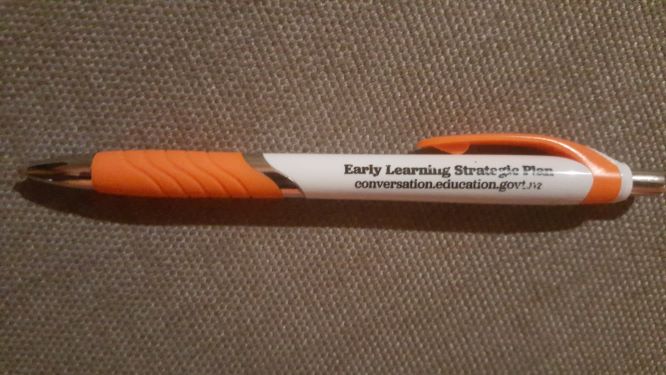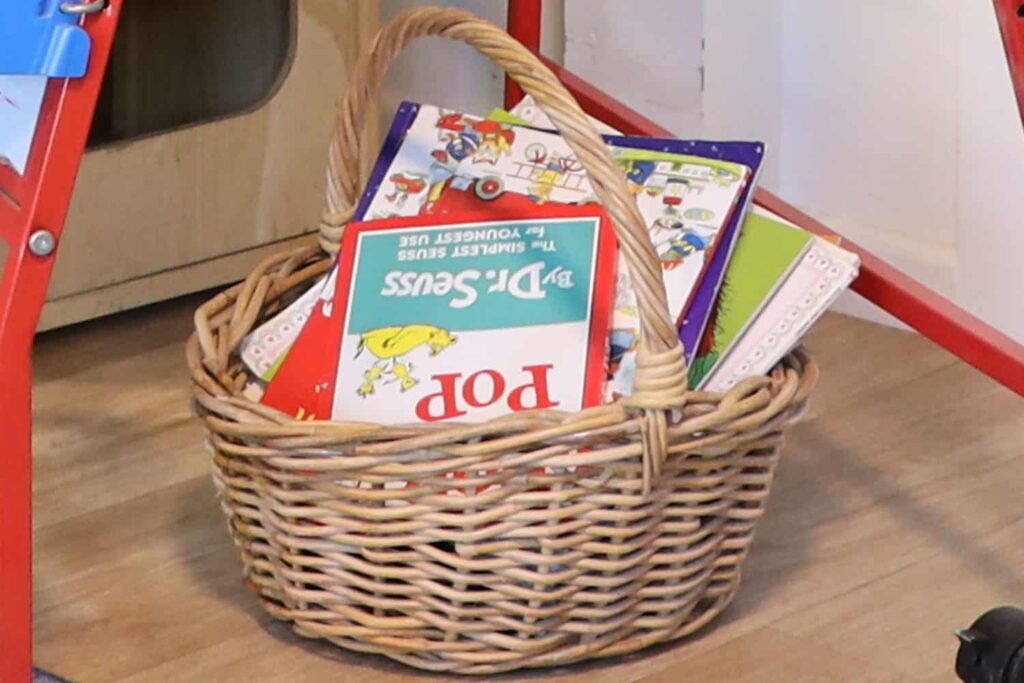The Abecedarian Project.
By Reg Ponniah.
February 29, 2012.
A highly regarded study is providing a clearer scientific understanding of how early childhood education can be an important contributor to academic achievement and social competence in adulthood 30 years on.
Adults who participated in the ECE programme in the 1970s are still benefiting from their early experiences in a variety of ways, according to the Abecedarian Project, conducted in the United States.
Researchers in the Abecedarian Project, led by the FPG Child Development Institute at the University of North Carolina at Chapel Hill, followed participants from early childhood through adolescence and young adulthood, to generate a comprehensive and rare set of longitudinal data.
The project was a carefully controlled scientific study (experiment) of the potential benefits of early childhood education for children from low-income families who were at risk of developmental delays or academic failure.
This article describes the project and the latest findings, along with a description of the programme features and the children and families who participated. Findings from a cost-benefit analysis of providing high quality ECE are outlined.
The article concludes that it would be very difficult to replicate the experiment and achieve the same results in different cultural contexts, and to provide ECE of the same type and with the same very high standards consistently to a larger number of children. The results therefore should not be generalised by making claims that ECE has long term benefits for children beyond the context of the Abecedarian Project experiment.
The Project Findings

The Participants attended a full-time childcare facility that operated all year-round, from infancy until they entered kindergarten at age 5. Throughout their early years, the children were provided with educational activities designed to support their language, cognitive, social and emotional development. Follow-up studies of the children have consistently shown that as a result of this particular early intervention they did better academically and had a greater chance of adult educational attainment than peers who did not experience the intervention (the control group).
The latest study of adults at age 30 shows the effects are persisting into middle adulthood. Abecedarian Project participants had significantly more years of education than peers who were part of a control group. They were also four times more likely to have earned college degrees – 23 percent of participants graduated from a four-year college or university compared to only 6 percent of the control group.
The project demonstrated that young at-risk children who receive high-quality early education from infancy to age five can do better in school academically, and are more likely to stay in school longer and graduate. Children who participated in the early intervention programme had higher cognitive test scores from the toddler years to age 21. Also, children who receive high-quality early education were, on average, older as adults when their first child was born.
Led by Dr Craig Ramey, the study is believed to be one of the first internationally to track participants in an early childhood programme from infancy to age 21. It tracked 111 low-income African-American families in North Carolina. Half of the participants were randomly assigned to receive full-time educational intervention services in daycare in infancy while the other half did not receive educational services.
The findings have powerful implications for public policy, Dr Ramey is reported to have said in the Medicalxpress.com website.
“I believe that the pattern of results over the first 30 years of life provides a clearer than ever scientific understanding of how early childhood education can be an important contributor to academic achievement and social competence in adulthood.
“The next major challenge is to provide high quality early childhood education to all the children who need it and who can benefit from it.”
Co-author of the study Dr Elizabeth Pungello, a scientist at the FPG Institute, said the educational attainment were especially noteworthy.
“When we previously revisited them as young adults at age 21, we found that the children who had received the early educational intervention were more likely to go to college. Now we know they were also more likely to make it all the way through and graduate,” Dr Pungello said. “What’s more, this achievement applied to both boys and girls, an important finding given the current low rate of college graduation for minority males in our country.”
The Abecedarian Project also found that participants were more likely to have been consistently employed (75 percent had worked full-time for at least 16 of the previous 24 months, compared to 53 percent of the control group) and less likely to have used public assistance (only 4 percent received benefits for at least 10 percent of the previous seven years, compared to 20 percent of the control group). They also showed a tendency to delay parenthood by almost two years compared to the control group.
Project participants appeared to have done better in relation to several other social and economic measures (including higher incomes). Interestingly, those results were not statistically significant suggesting perhaps the class a child is born into remains a pervasive factor despite participation in high quality early childhood education leading to higher educational and employment outcomes.
Of the 111 infants originally enrolled in the project (98 percent of whom were African-American), 101 took part in the age 30 follow-up.
Senior scientist at the institute and lead author of this latest study, Frances Campbell, said that being able to follow the study sample over so many years had been a privilege.
“The randomised design of the study gives us confidence in saying that the benefits we saw at age 30 were associated with an early childhood educational experience.”
The programme was implemented at a single site in1972 in North Carolina, and underwent numerous assessments of its long-term effects on participants.
It involved children 0-5 years from very disadvantaged backgrounds (most raised by single mothers with less than a high school education, reporting no earned income, and most of whom were African-American).
The childcare and preschool were provided on a full-day, year-round basis, had a low teacher-child ratio (ranging from 1:3 for infants to 1:6 for 5-year-olds) and used a systematic curriculum of “educational games” emphasising language development and cognitive skills. The average annual cost of the intervention was about $US13,900 per child (given that this was 30 years ago, in today’s terms the cost would be significantly more to obtain results close to what the Abecedarian project obtained).
DETAILS OF THE ABECEDARIAN PROJECT PROGRAMME
The project involved two parts – a preschool intervention and a school-age intervention.
The preschool programme was offered in a day care centre setting, the main goal of which was to create an educational, stimulating, and structured environment to promote growth and learning and to enhance school readiness. The curriculum was designed to enhance cognitive and linguistic development and to provide an enriched language environment that was responsive to children’s needs and interests. In addition, children received nutritional supplements and disposable nappies, along with paediatric care and supportive social work services.
Infants began attending the preschool programme between six weeks and three months of age, and continued until entry into kindergarten at age 5. Children attended the day care centre six to eight hours a day, five days a week, 50 weeks a year. After the children turned three years old, they received a more structured set of educational curricula, which became increasingly similar to programmes in the local public kindergartens as the children grew older.
The school-age intervention began at kindergarten entry and continued through the first three years of elementary school. A resource teacher was assigned to each child and family for the length of the programme. The resource teacher prepared an individualised set of home activities to supplement the school’s basic curriculum in reading and arithmetic, taught parents how to use these activities with their children, tutored children directly, met classroom teachers regularly to ensure that home activities aligned with the skills being taught in the classroom, served as a consultant for the classroom teacher when problems arose, and advocated for the child and family within the school and community. Resource teachers made about 17 school visits and about 15 home visits per year for each child. In addition, they offered children a variety of summertime supports, including summer activity packets, help in arranging summer camp experiences, trips to the public library, and tutoring in reading skills.
DETAILS ABOUT THE CHILDREN AND FAMILIES
The majority of the children in the Abecedarian Project were African-American (98%). Most of the families included in the intervention group (83%) were female-headed and characterised by extreme poverty, unstable employment, and parental low educational attainment. Had the children of other types of families been involved in the experiment to show the efficacy of high quality early childhood education, it cannot be known if similar results would have been obtained.
The experiment took place in a small, relatively affluent university town with a wide range of human services agencies, including public hospitals and programmes providing housing, fuel subsidies, food supplements, and job training. Thus, a relatively high degree of social, fiscal, and material supports were already available to participants (both intervention and control), and results may not be the same in cities and other countries with markedly different features.
COST-BENEFIT ANALYSIS
Researchers at the National Institute of Early Education Research (NIEER) conducted a benefit-cost analysis of the Abecedarian to assess whether the cost to society was worth the benefits. They found that taxpayers received a four-to-one return on their investment, while their study also showed higher lifetime earnings for both the children and their mothers.
NIEER researchers found:
- The children in high-quality programmes are projected to make roughly $US143,000 more over their lifetimes than those who didn’t take part in the programme.
- Mothers of children who were enrolled can also expect greater earnings – about $US133,000 more over their lifetimes.
- School districts can expect to save more than $US11,000 per child because participants are less likely to require special or remedial education.
- Results suggested a possible impact on smoking. Participants were less likely to smoke (39 percent vs. 55 percent in the control group), resulting in health benefits and longer lives, for a total benefit of $US164,000 per person.
- The children of participants are projected to earn nearly $48,000 more throughout their lifetimes.
The overall return was about four dollars in benefits for every dollar invested.
The Abecedarian Project used rigorous standards to evaluate the programme, including a randomised experimental design and longitudinal follow-up. The participants experienced significant and sizeable gains across most of the cognitive and academic performance outcomes. Besides the main finding of significant effects for the programme as a whole at enhancing long-term IQ and academic achievement, another important conclusion to be drawn from the evaluations is that five years of the Abecedarian preschool intervention is almost equally as effective as five years of the preschool programme with a three-year primary school follow-up.
STUDY LIMITATIONS
This was a small but very well-designed randomised controlled trial, whose results are reinforced by a randomised controlled trial of a similar intervention, the Perry School Project. Although the results of both studies are very important, it is cautioned that both interventions are demonstration projects, and it is not yet known if the results can be replicated on a broader scale in typical classroom settings.
(The Perry Project estimated a return of up to seven dollars for every taxpayer dollar spent on early education, with most of the return from decreased crime costs)
Policy makers, however, should be cautious when attempting to draw conclusions beyond what the research can truly support.
Some limitations should be considered in interpreting the findings of the study.
The sample was limited to individuals born into low-income families almost all of whom were African-American, and thus the findings generalise to that demographic group and may apply to other groups in unknown ways.
The small sample of children, a significant limitation in itself, was provided with high quality (and high cost) child care and family services. It is unlikely that other early childhood education sites would be able to deliver the same kind of superior care to a whole population of children that Abecedarian Project researchers provided for just 57.
Despite its obvious benefits, the Abecedarian Project should not be interpreted as a guide to better early childhood education and that any other country, including New Zealand, would benefit equally by applying its results to its early childhood education services.
NOTE
- The latest Abecedarian Project findings of 30 years on were published in January 2012 in the Journal Developmental Psychology.
- Information reported here comes from the Project reports and online reported interviews with the project researchers.
View other research articles on this topic.








